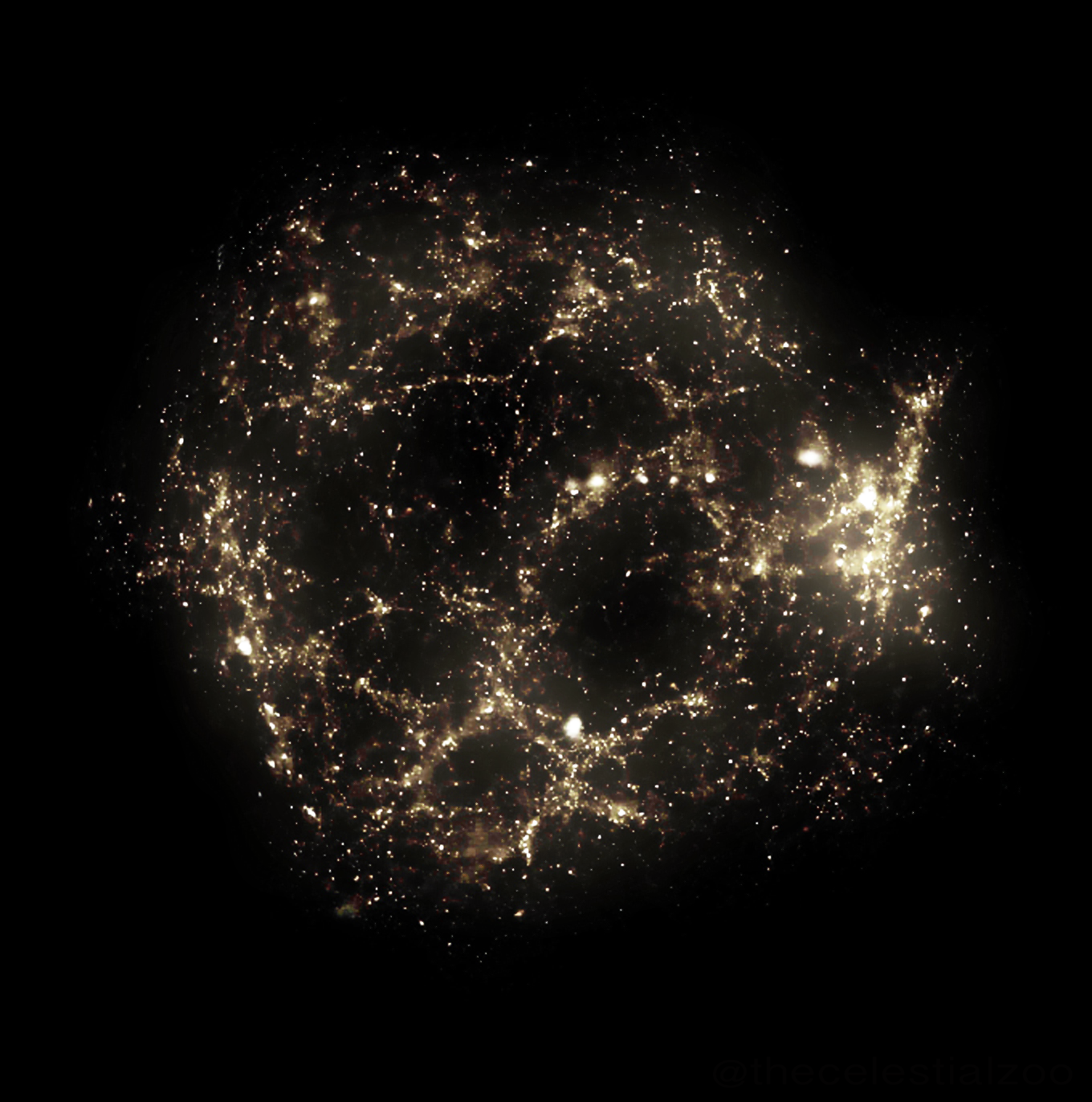Giant Void on:
[Wikipedia]
[Google]
[Amazon]
 The Giant Void (also known as the Giant Void in NGH, Canes Venatici Supervoid, and AR-Lp 36) is an extremely large region of space with an underdensity of galaxies and located in the
The Giant Void (also known as the Giant Void in NGH, Canes Venatici Supervoid, and AR-Lp 36) is an extremely large region of space with an underdensity of galaxies and located in the
 The Giant Void (also known as the Giant Void in NGH, Canes Venatici Supervoid, and AR-Lp 36) is an extremely large region of space with an underdensity of galaxies and located in the
The Giant Void (also known as the Giant Void in NGH, Canes Venatici Supervoid, and AR-Lp 36) is an extremely large region of space with an underdensity of galaxies and located in the constellation
A constellation is an area on the celestial sphere in which a group of visible stars forms Asterism (astronomy), a perceived pattern or outline, typically representing an animal, mythological subject, or inanimate object.
The first constellati ...
Canes Venatici
Canes Venatici ( ) is one of the 88 constellations designated by the International Astronomical Union (IAU). It is a small northern constellation that was created by Johannes Hevelius in the 17th century. Its name is Latin for 'hunting dogs', and ...
. It is the second-largest-confirmed void to date, with an estimated diameter of 300 to 400 Mpc (1 to 1.3 billion light-year
A light-year, alternatively spelled light year (ly or lyr), is a unit of length used to express astronomical distances and is equal to exactly , which is approximately 9.46 trillion km or 5.88 trillion mi. As defined by the International Astr ...
s) and its centre is approximately 460 Mpc (1.5 billion light-years) away ( z = 0.116). It was discovered in 1988, and was the largest void in the Northern Galactic Hemisphere, and possibly the second-largest ever detected. Even the hypothesized "Eridanus Supervoid" corresponding to the location of the WMAP cold spot is dwarfed by this void, although the Giant Void does not correspond to any significant cooling to the cosmic microwave background
The cosmic microwave background (CMB, CMBR), or relic radiation, is microwave radiation that fills all space in the observable universe. With a standard optical telescope, the background space between stars and galaxies is almost completely dar ...
.
Inside this vast void there are 17 galaxy cluster
A galaxy cluster, or a cluster of galaxies, is a structure that consists of anywhere from hundreds to thousands of galaxies that are bound together by gravity, with typical masses ranging from 1014 to 1015 solar masses. Clusters consist of galax ...
s, concentrated in a spherically shaped region 50 Mpc in diameter. Studies of the motion of these clusters show that they have no interaction to each other, meaning the density of the clusters is very low resulting in weak gravitational interaction. The void's location in the sky is close to the Boötes Void file:boovoid.png, 259x259px, A map of the Boötes Void
The Boötes Void ( ) (colloquially referred to as the Great Nothing) is a roughly Sphere, spherical region of Interstellar medium, space in the vicinity of the constellation Boötes. It contain ...
.
In a series of papers published between 2004 and 2006, cosmologist and theoretical physicist Laura Mersini-Houghton presented a theory that the universe arose from a multiverse
The multiverse is the hypothetical set of all universes. Together, these universes are presumed to comprise everything that exists: the entirety of space, time, matter, energy, information, and the physical laws and constants that describ ...
, and made a series of testable predictions which included the existence of the Giant Void.
See also
*KBC Void
The KBC Void (or Local Hole) is an immense, comparatively empty region of space, named after astronomers Ryan Keenan, Amy Barger, and Lennox Cowie, who studied it in 2013. The existence of a local underdensity has been the subject of many pieces ...
* Large-scale structure of the cosmos
* List of largest voids
* Local Void
* Microscopium Void
* Northern Local Supervoid
* Southern Local Supervoid
* South Pole Wall
* Void (astronomy)
Cosmic voids (also known as dark space) are vast spaces between Galaxy filament, filaments (the largest-scale structures in the universe), which contain void galaxy, very few or no Galaxy, galaxies. In spite of their size, most galaxies are no ...
References
Voids (astronomy) Canes Venatici {{Galaxy-stub